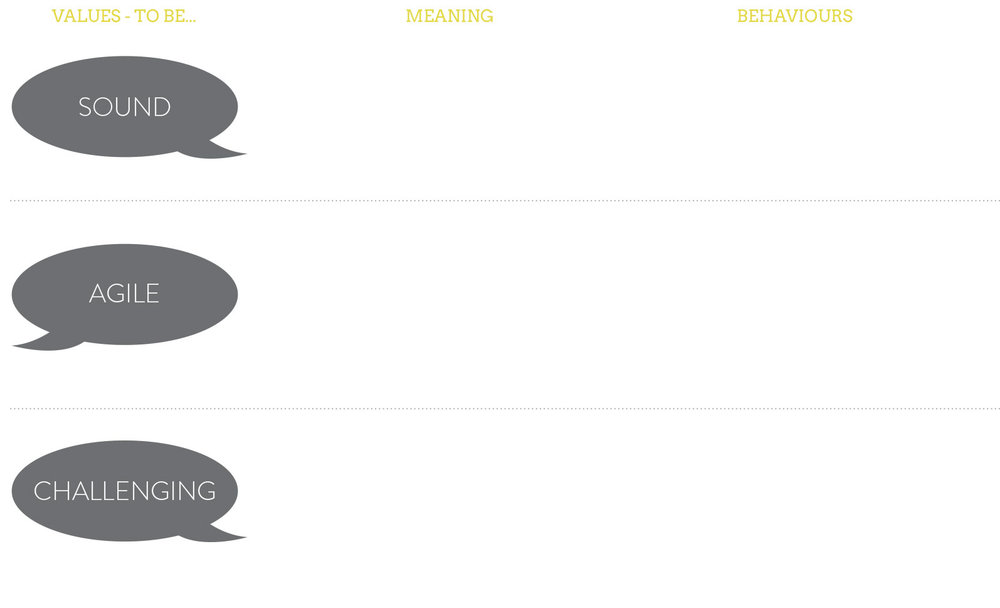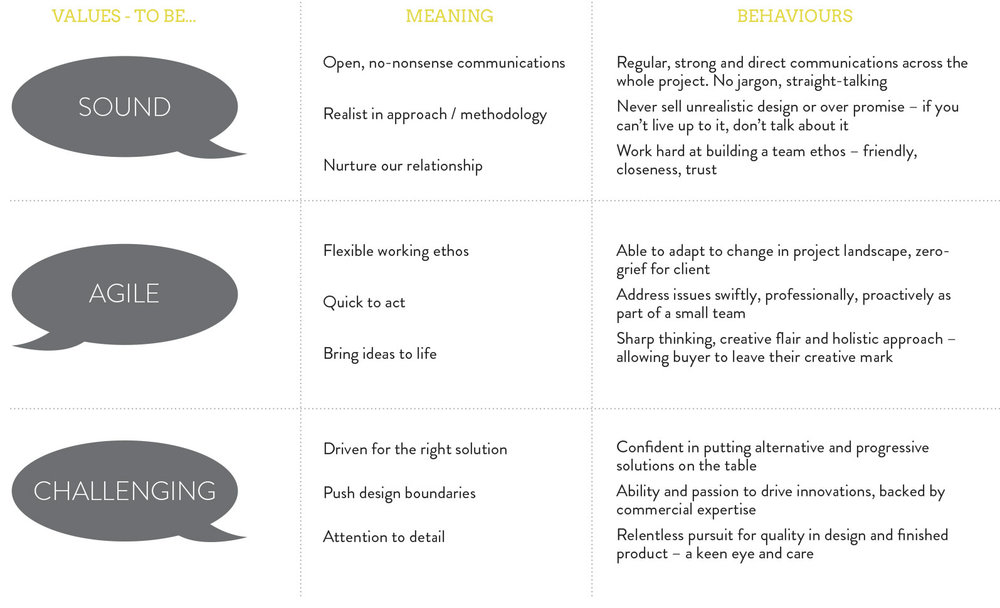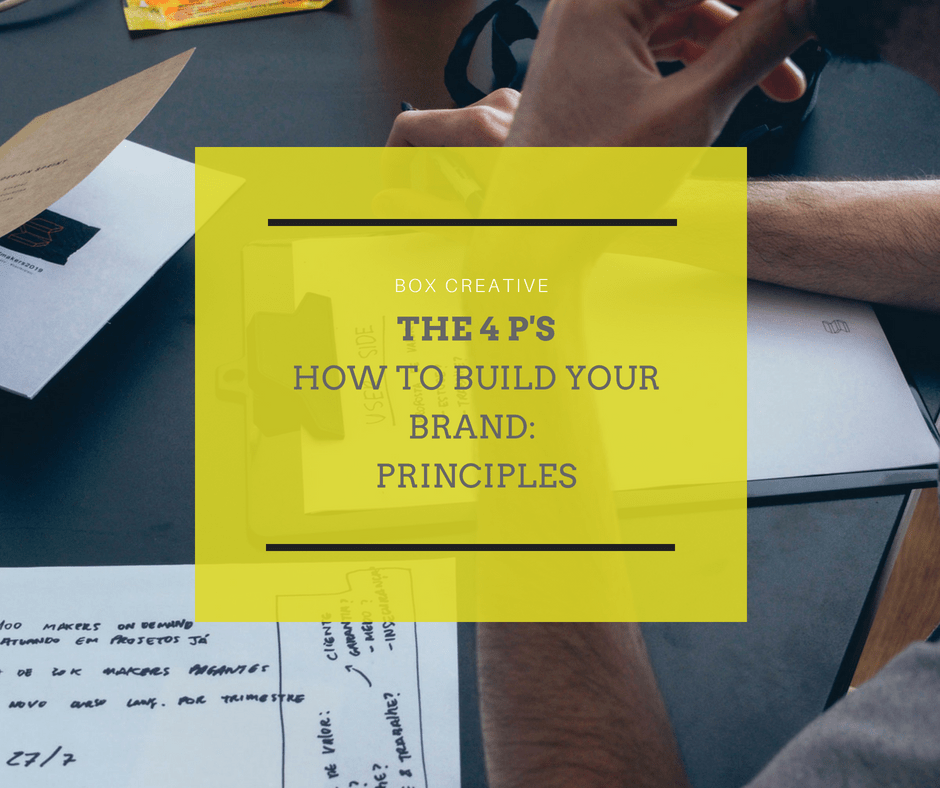So, what do you stand for and how does this relate to your team’s operations and customer experience?
As part of my 4P’s and CORE IDEA framework, PRINCIPLES form the third ‘P’.
Your principles, or brand values, are what you care about, how you want to be considered and what sit at the heart of your ideals. These are not the value of your brand, although there is a link. Rather, they are what the brand holds paramount in the way it operates.
Without values to guide you, your brand will seem like just any other business—rather than a distinctive, recognisable brand—and your growth and bottom line will suffer as a result.
What is the value of brand values?
Imagine you’re going on a return Virgin train journey (other train lines are available):
-
On your outward journey – you receive exceptional service, surprising details like a talking toilet and humorous signage, beautifully designed carriage with Wi-Fi and sockets, and have a memorable experience.
-
Your return journey goes a little differently – you come against a rude steward who shares no information about your delays, a dirty carriage with no Wi-Fi, out of order WC’s and have a terrible experience.
Which journey delivers on the Virgin brand values of providing heartfelt service, being delightfully surprising, fun, value and quality, and straight up while maintaining an insatiable curiosity and creating smart disruption?
Crucially: which journey are you likely to repeat, advocate and recommend i.e. buy more of? Which journey will result in very public accounts being published on social media of the experience, active discouragement of custom and tarnished brand reputation?
It’s not difficult to guess the answer.
Delivering against your brand values and principles are very much a commercial exercise as your brand values are your operational and behavioural compass that aligns your team with the customer experience.
Building advocacy through your values
For your brand to be valuable, you don’t have to have the most expensive products or services in your industry. Your value is multiplied every time a you have a repeat customer, when they choose you over all the other brands in your industry and chooses to advocate and recommend your brand to a friend.
And that choice is closely related to your values and delivering against them every time they interact with your brand
Customer loyalty raises the value of your brand. To build meaningful connections with your audience, you need to define your brand values, instil them in the business behaviours and ensure you live up to them.
“If people believe they share values with a company, they will stay loyal to the brand.”
— Howard Schultz, CEO of Starbucks
How do I find my Brand Values?
So how do you define them, and what do you do with them once you have them? Here are a few exercises to get you started:
PLEASE NOTE: Ban obvious or intrinsic words such as ‘Trusted’, ‘Reliable’, ‘Nice’… These don’t describe what makes your company powerful and unique. Every business should have these as standard, you’re looking for something a bit deeper, with more meaning or emotional hook that people can connect to.
1. Discover your true values
Complete the following statements:
“Our role is defined by the values; we care about……”
What’s important to you? Make an exhaustive list.
“We undertake our role in a ‘_________ly’ manner.”
How do you want to be perceived and show up with your audience? Maybe start with way you don’t want to be perceived. That’s because we often experience negative emotions more intensely than positive ones, and we can often articulate far better how we want to avoid doing something than how we would like to do something. Think of the OPPOSITE adjectives to describe these negative experiences and if these fit with your values.
“We can surmise these ideals as: 1. ….. 2. ….. 3. …..”
Once you have a list of possible candidates, pick your top three values that mean the most to you and that you’d like to focus your energies on. They should be Memorable, Unique, Actionable, Meaningful, Clear and defined and Timeless.
I’ll demonstrate through a B2B manufacturing business.
FOR EXAMPLE:

2. Create context and meaning for each.
Choosing 3 words is the first step, but alone can be interpreted in a myriad of ways.
Take each principle and attach 3 meanings against them that explain what the principles mean to YOU.
FOR EXAMPLE:

3. Create behaviours for each meaning.
You have your values, their meaning, now you need to create what behaviours sit behind these meanings that form the basis of your brand culture, internal engagement and employee training, so you can deliver against the values.
FOR EXAMPLE:

You can see how the values are explained and the behaviours, that dictate the customer experience, come directly from these.
4. “We do this by…..”
And then try to condense everything into one short and powerful phrase that captures the essence of your brand principles, what you stand for and your particular approach.
FOR EXAMPLE:
“We do this by personal attention to detail,
with directness and drive.”
“Too many companies want their brands to reflect some idealised, perfected image of themselves. As a consequence, their brands acquire no texture, no character”
— Richard Branson
Instilling into your brand culture
The most important thing after discovering your core values is staying consistent with them. Everything about your brand, from brand identity system and tone of voice should represent those core values. By articulating what you stand for as a brand and being consistent with how you behave and show up, you can attract better customers and employees that share your beliefs. In fact, studies show that organisations and employees who have shared values are nine times more likely to experience exceptional customer satisfaction.
Start with your employees.
It starts with your key assets – your employees. These should be treated as your FIRST CLIENTS. Take time to introduce them to your values, your vision, your purpose; what does this mean to the business and what does it mean for THEM; how are you investing in them so they are aligned with you values and live and breathe them every day with your customers?
“Brand values are easy to write, easier to get wrong. Brand values are a set of guiding principles that affect the choices you make and the actions you take.”
— Three Rooms
When you’ve got the company’s core brand values well-defined, and you’ve worked through your messaging and you’ve engaged your whole organisation in producing them, it produces a really strong, cohesive vision: everybody’s singing from the same song sheet.
It is essential that employees embody your brand promise and understand how to effectively execute on it. Inconsistencies between internal and external branding messages can weaken brand culture, confuse employees, and negatively affect customer experience.
Ongoing training is important, especially for employees who are on the front-line with customers. Including employees in decisions and asking for their ideas on how to improve processes are critical to enlisting their support, engagement and alignment.
Customer-facing employees can also serve as a company’s eyes and ears in evaluating the customer experience and front-line happenings. Companies may benefit from creating mechanisms for employees to provide feedback on how customers are responding to the brand.
Values = Action
For brand values to be effective, you need to act on them. The business needs to live up to its values internally and externally or risk long-term issues with customer satisfaction, reputation and the general well-being of the organisation and its employees.
The brand is in the people, the brand is in the product, the brand is in the vision. It touches every aspect of the business.
Find your values, and live by them.
Tell us how you get on! he***@*************co.uk
